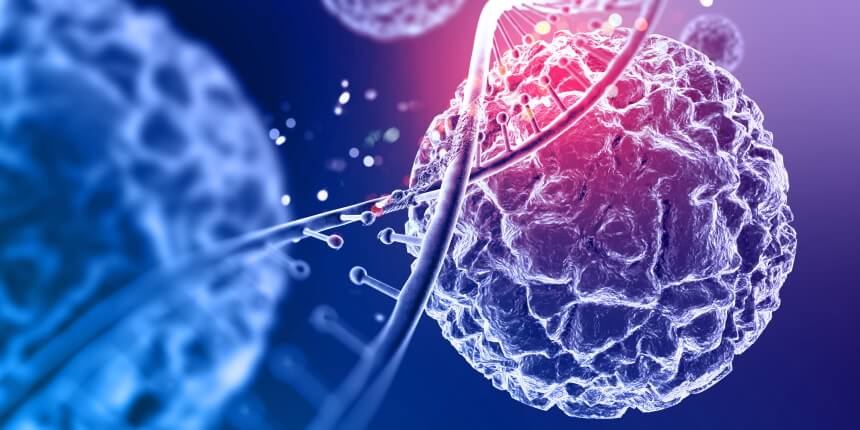
JAK2 and Myelofibrosis
JAK2 and Myelofibrosis are often mentioned together due half of myelofibrosis cases occurring in JAK2 positive individuals. JAK2 is a protein that promotes the growth and reproduction of cells. It is a part of the JAK/STAT pathway. Myelofibrosis is a blood disorder that replaces healthy bone marrow with fibrous scar tissue, leading to fibrosis. Myelofibrosis belongs to a group of chronic blood disorders known as Myeloproliferative Neoplasms (MPNs).
What are the symptoms of JAK2 and Myelofibrosis? JAK2 mutated cells grow and divide at a rapid rate, leading to the bone marrow being damaged further, causing more symptoms including anemia, an enlarged spleen, and more. The JAK2 mutation is found in roughly half of all primary myelofibrosis cases. Primary myelofibrosis develops on its own, which is more common than its counterpart. Myelofibrosis that stems from another blood disorder or disease is known as secondary myelofibrosis.
How to Test for the JAK2 mutation
To confirm the mutation JAK2 in myelofibrosis, doctor can use a blood sample or a bone marrow sample from a biopsy to check your JAK2 gene. Unlike some other genes, the JAK2 mutation can not be inherited, it is developed over the course of the patient’s lifetime.
The specific test used is called JAK2 V617F, which can also be used to diagnose cases of myelofibrosis. Along with other supporting clinical signs, a positive test for JAK2 is likely a hint that the patient has an MPN. Other testing, such as a bone marrow biopsy, may need to be performed to determine which MPN, including myelofibrosis, the person has and to evaluate its severity.
Clinical Trials for JAK2 and Myelofibrosis
Although myelofibrosis is rare, a high number of cases being associated with JAK2 has motivated clinical researchers to target this gene in treating the disease. Clinical trials have aimed to create JAK2 inhibitors to help treat myelofibrosis patients who are JAK2 positive. These new therapies can help manage the disease, especially patients with enlarged spleens while helping manage the symptoms of myelofibrosis. Despite improving the quality of life for patients, most JAK2 inhibitors are not curative treatments. Chemotherapy followed by stem cell transplantation is the only treatment with the potential to cure myelofibrosis.
The most common treatment used for JAK2 positive myelofibrosis is ruxolitinib, also known as Jakafi. This JAK2 inhibitor was approved by the FDA for treatment in 2019. There are a total of 5 clinical trials available for enrollment in the United States specifically for the JAK2 mutation. However, there are many more available for myelofibrosis patients, both JAK2 positive and negative. Talk with your doctor to see if a clinical trial could benefit your individual cancer case.
Sources:

Leave a Comment
(0 Comments)